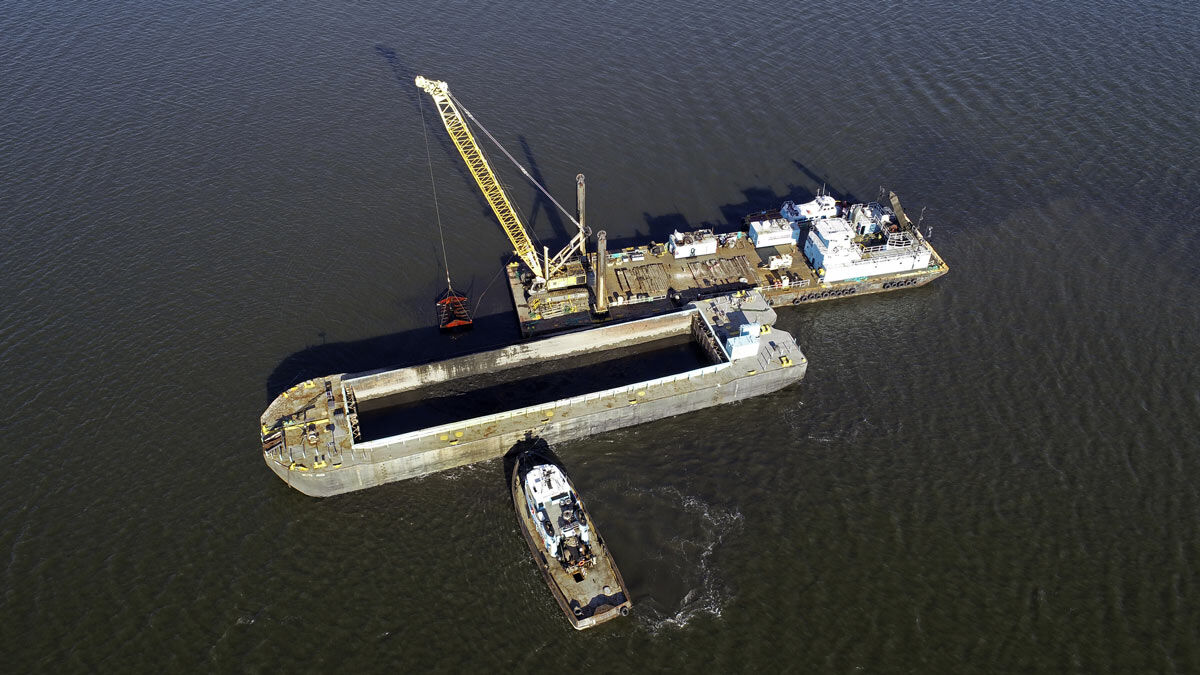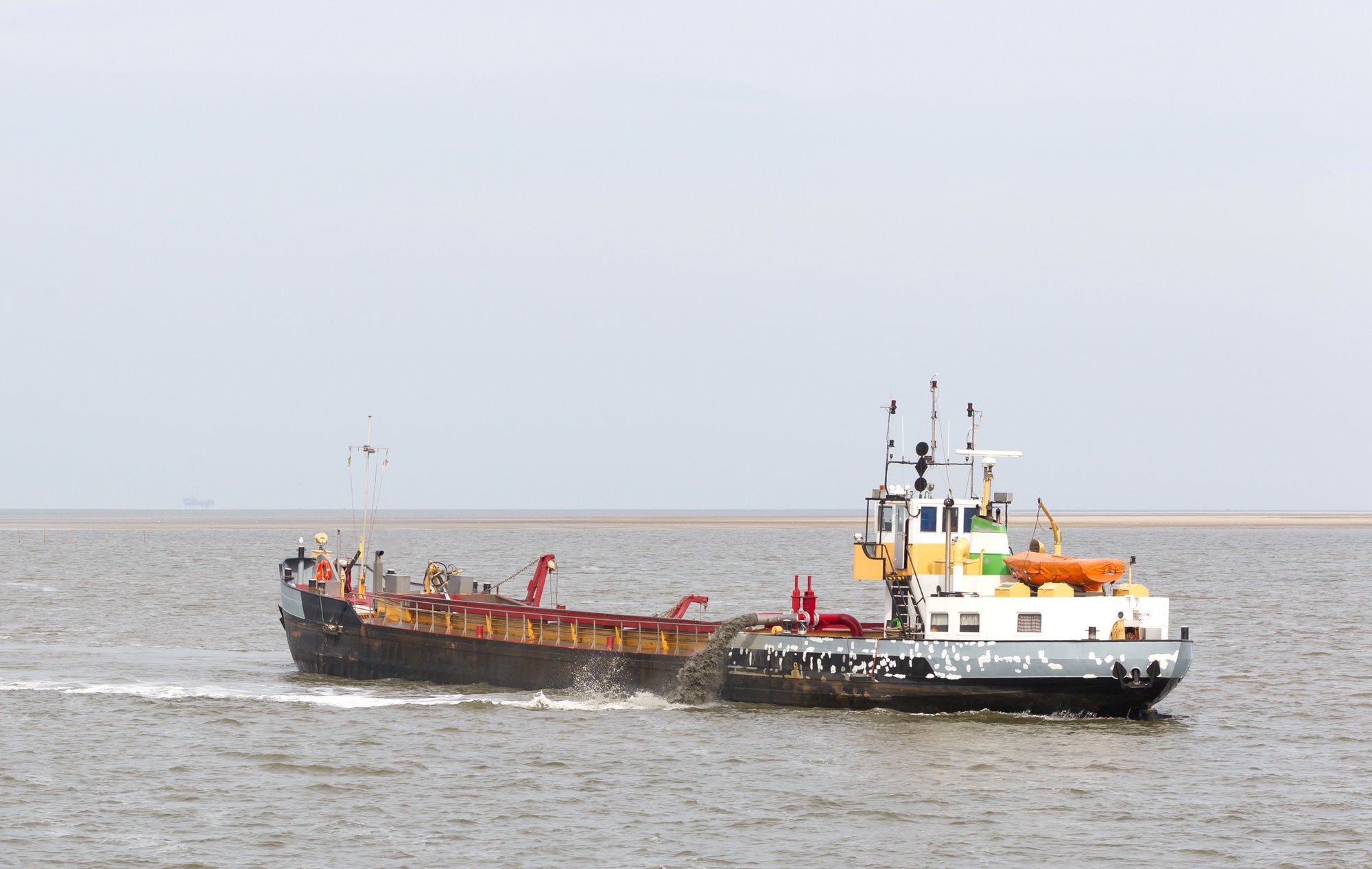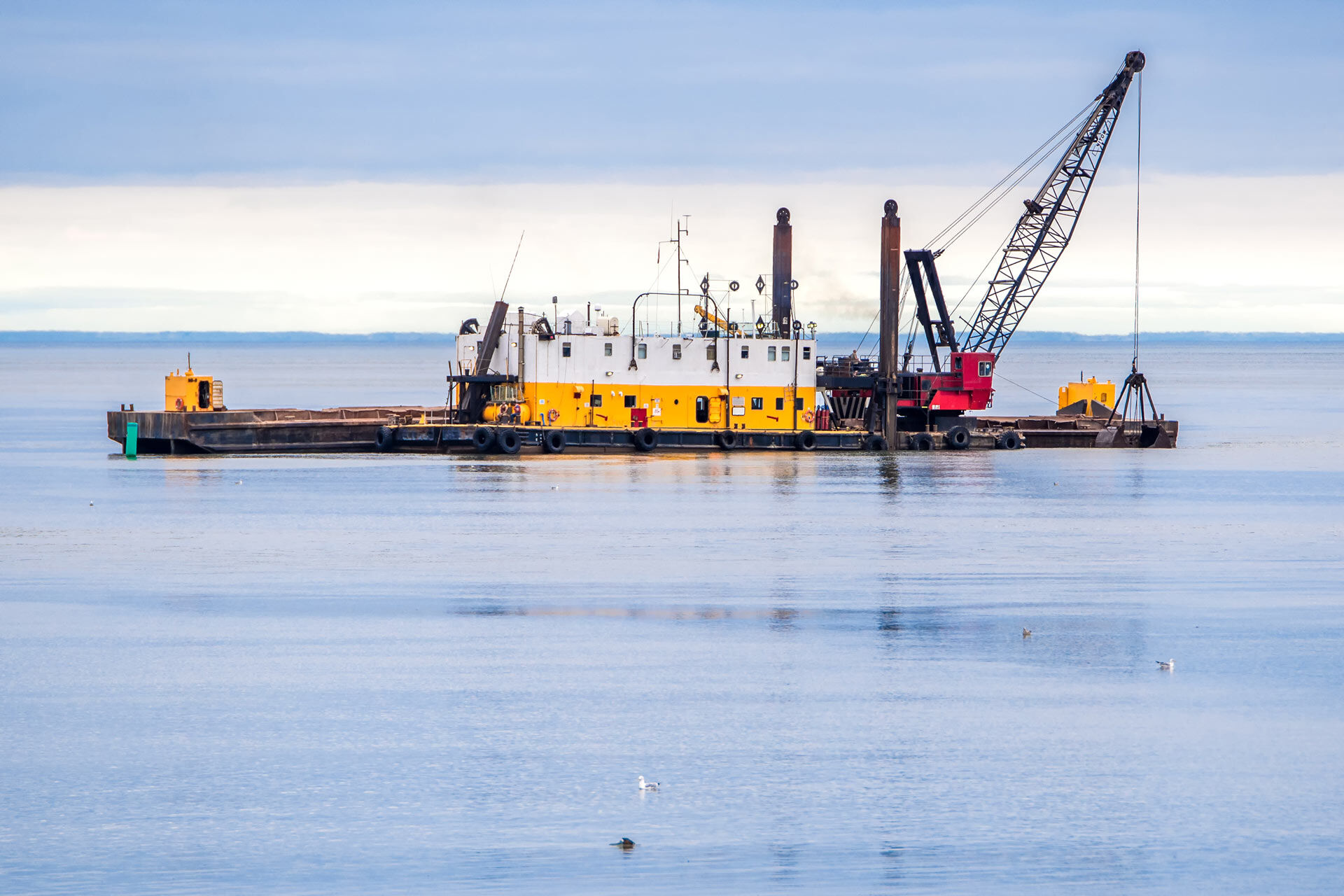Diesel powered dredge operations prioritize mechanical simplicity, layout compatibility, and long-hour reliability over electronic complexity.
Main pump engines are a major component of marine dredging operations. Whether you're running a cutterhead, a booster, or another of the many types of dredgers in service today, pump performance drives production. Downtime hits fast and hard when that engine starts to slip.
Many operators are still relying on older platforms across a wide range of dredging vessels, using engines that were not designed for modern run times, fuel demands, or service expectations. As these engines age out of viability, the question of replacement becomes as much about operational strategy as it is about mechanical fit.
For a diesel powered dredge, the right engine setup determines how long a vessel stays productive and how easily it can be maintained in the field.
This article breaks down the practical realities of repowering a main dredge pump. It looks at where dredge efficiency begins, where it falls apart, and what a smarter engine strategy really involves.
What Are 3 Factors That Affect Dredging Works?
Dredging operations depend on consistency. When production slows, costs rise and schedules fall behind. Three main factors shape how efficiently a dredge performs and how long it stays online.
1. Engine Performance Under Load
Engines in dredging service run for long stretches at steady RPMs and heavy load. Fuel efficiency, torque stability, and cooling capacity all determine how well they handle sustained work. Reliable power delivery keeps pumps moving material without interruption..
2. Maintenance and Parts Availability
Every hour of downtime cuts into operating margins. Access to service parts and basic mechanical upkeep often decides whether a job finishes on time. Simple, field-serviceable engines with available components help keep diesel powered dredges working instead of waiting on deliveries.
3. Jobsite Conditions
No two jobs are the same. Soft silt, compacted clay, and debris-heavy waterways all place different demands on equipment. Matching power and setup to the environment helps maintain production rates and avoid unnecessary wear.
Engine Performance Under Load
Engines in dredging service run for long stretches at steady RPMs and heavy load. Fuel efficiency, torque stability, and cooling capacity all determine how well they handle sustained work. Reliable power delivery keeps pumps moving material without interruption.
Read More ⟶Maintenance and Parts Availability
Every hour of downtime cuts into operating margins. Access to service parts and basic mechanical upkeep often decides whether a job finishes on time. Simple, field-serviceable engines with available components help keep diesel powered dredges working instead of waiting on deliveries.
Read More ⟶Jobsite Conditions
No two jobs are the same. Soft silt, compacted clay, and debris-heavy waterways all place different demands on equipment. Matching power and setup to the environment helps maintain production rates and avoid unnecessary wear.
Read More ⟶Understanding these factors helps operators plan ahead, manage fuel and maintenance costs, and keep diesel powered dredge projects running without disruption.
What are the Key Factors in Choosing an Engine Layout for Dredging?

As more operators move away from aging platforms, the search for a reliable, mechanical replacement has narrowed. For main dredge pump applications, that path increasingly leads to the Mitsubishi R Series, specifically the S6R‑Y3 and S12R‑Y3, which cover the 600 to 1350 horsepower range.
Both engines are fully mechanical and emissions-compliant, with no ECUs, no complex aftertreatment systems, and no dependence on software updates. That matters in pump applications, where simplicity translates directly to uptime and serviceability. Operators running 12- to 24-hour shifts don’t have time for diagnostic guesswork or electronic component failures. They need a power system that can take abuse, handle dirtier fuel, and keep running without intervention.
The S6R‑Y3, a 6-cylinder inline engine, typically serves repowers in the 600 to 850 horsepower range. Its V12 counterpart, the S12R‑Y3, reaches up to 1350 horsepower and is well suited for replacing high-output engines like the CAT C32 or Cummins KTA50. Both are built on heavy-duty cast blocks with high-displacement designs that allow them to generate full torque at lower RPMs, ideal for diesel powered dredge operations where steady-state load matters more than acceleration.
How do Diesel Engine Configurations Affect Fuel Efficiency in Dredging?
In terms of fuel economy, the R Series holds its own against more modern electronically controlled platforms. At comparable output levels, operators have reported similar or improved burn rates with better long-term performance. But the larger advantage lies in reliability. A mechanically governed R Series engine can continue running through minor issues that would sideline an ECU-controlled system.
For operations focused on diesel powered dredge performance, mechanical durability amounts to a competitive edge, delivering consistent torque, manageable maintenance, and the ability to stay online in rough conditions.
How Does Engine Layout Impact Dredging Operations?

What are the Common Challenges in Diesel Engine Layouts for Dredging?
Replacing a main pump engine on a dredging vessel is a different proposition than swapping out propulsion. The demands are more consistent, but the layout can be tighter, and the tolerances leave less room for error.
The R Series engines are considered drop-in compatible for many legacy platforms, but "drop-in" doesn't mean identical. Each dredging vessel is unique, and proper planning around physical integration still plays a critical role in whether the repower goes smoothly.
A well-executed engine replacement for your specific equipment can reduce install time, cut down on rework, and avoid issues that impact performance in the field. Here are some details to consider:
Mounting & Footprint
The base dimensions of the R Series are generally similar to older V12 and inline-6 configurations, but things like mounting brackets, bedplate dimensions, and bolt patterns will often require some modification.
Exhaust & Airflow
Engines like the S12R often require upgraded exhaust systems. If you're replacing a CAT C32 or Detroit 16V‑149, for example, your existing exhaust diameter may be undersized. Air intake requirements are also higher due to the R Series' larger displacement, and these airflow changes can affect filtration and routing. This is a layout detail that directly impacts diesel powered dredge efficiency, especially in hot climates or enclosed engine spaces common on older types of dredgers.
Cooling Systems
Marine dredging pushes engines to run at high load for a long duration. The Mitsubishi R Series supports keel cooling and heat exchanger configurations, but the chosen system must be sized appropriately to prevent temperature drift during extended cycles.
Bellhousing & Gearbox Alignment
Many dredge pumps connect to the engine through a reduction gearbox or direct-drive flange. Bellhousing size, spline alignment, and gear ratio must all be validated before install. The R Series can typically be mated to common Twin Disc or REINTJES gearboxes, but minor adjustments may be required to ensure correct shaft height and driveline alignment.
Control Integration
The mechanical nature of these engines means control integration is straightforward. There’s no CAN bus, no software mapping, and minimal reconfiguration required. Most of the time, your existing throttle and shutdown systems can be reused with only minor adjustments.
Getting the Layout Right
Every dredge is different. That’s why Laborde starts each repower with a detailed layout review. Before anything ships, the team looks at:
- Mounting configuration: Does the new engine line up with the existing bedplate and bolt pattern?
- Bellhousing and coupling: Is the gearbox connection compatible, or will it need adapter hardware?
- Cooling requirements: Can the current keel cooler or heat exchanger handle the thermal load of the R Series?
- Exhaust and intake: Will piping need to be rerouted or upsized to match flow specs?
This layout work helps define an engine replacement strategy that improves performance without forcing a full redesign. For crews moving away from aging platforms, that planning keeps downtime short and surprises minimal.
Learn how Laborde supports marine dredging operations:




